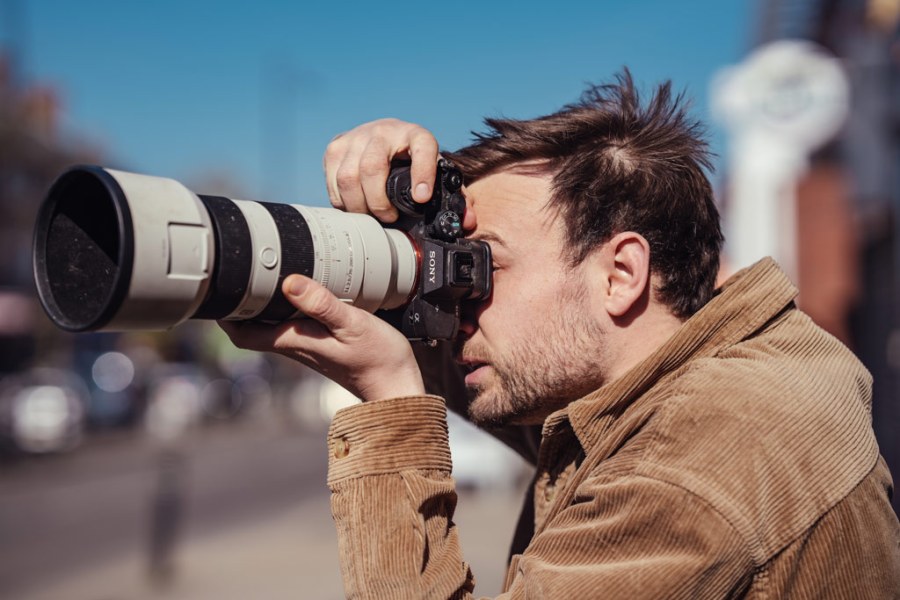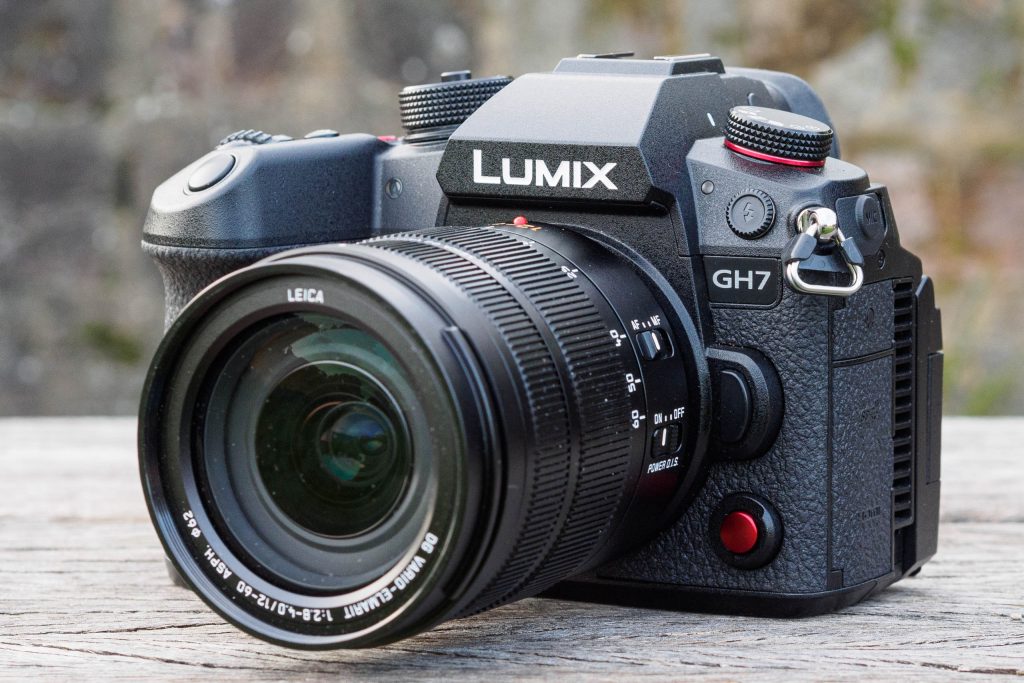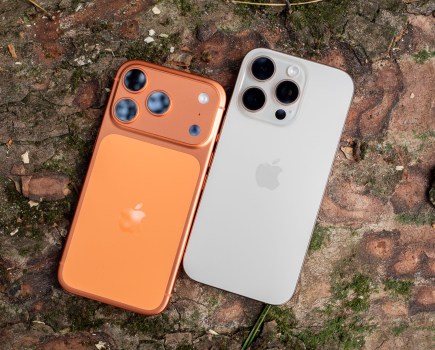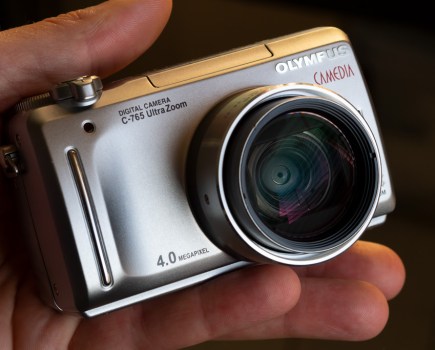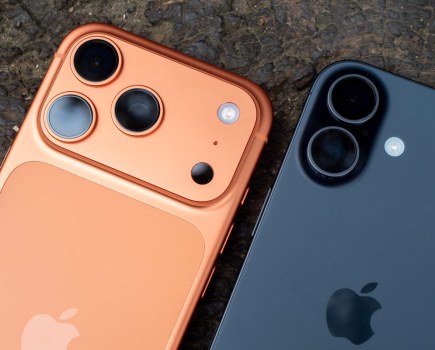It’s a fact that the the best cameras these days are mirrorless cameras. All major manufacturers now invest their expertise and resources in the format. Photographers looking for the fastest burst speeds, highest resolutions or the most accurate autofocus buy mirrorless cameras. This guide summarises the best ones we’ve reviewed at all price points, from beginner to enthusiast to professional models, with recommendations for types of use they are best suited to.
In this guide you’ll find cameras from all brands, and all different sensor sizes. Not all mirrorless cameras are ultra-expensive professional models – Sony, Canon, Nikon, Fujifilm, Panasonic and OM System offer great beginner and enthusiast options as well as the top-end stuff. There are plenty of budget-friendly mirrorless cameras, too. We have a primer on how to choose the right camera for you at the bottom of this page.
The best mirrorless cameras – our quick list
Here are our picks of the best mirrorless cameras you can buy, from beginner options to top-end pro shooters…
The best mirrorless cameras for beginners:
- Best beginner mirrorless overall: Olympus OM-D E-M10 Mark IV – Buy now
- Best Canon for beginners: Canon EOS R7 – Buy now
- Best for vlogging and mirrorless beginners: Fujifilm X-S20 – Buy now
- Best beginners’ hybrid for content creators: Nikon Z50II – Buy now
The best mirrorless cameras for enthusiasts:
- Best all-rounder for enthusiasts: Nikon Z6 III – Buy now
- Best for those who like an analogue-style experience: Fujifilm X-T5 – Buy now
- Best enthusiast mirrorless for wildlife and action: Panasonic Lumix G9 II – Buy now
- Best enthusiast mirrorless for travel and outdoors: OM System OM-5 – Buy now
- Best enthusiast mirrorless for filmmakers: Panasonic Lumix GH7 – Buy now
- Best for action shooters who want a light setup: Fujifilm X-H2S – Buy now
- Best for hybrid photo/video content creators: Sony A7 IV – Buy now
- Best full-frame high-res for weddings and events: Nikon Z7 II – Buy now
- Best Canon all-rounder for enthusiasts: Canon EOS R6 Mark II – Buy now
Best mirrorless cameras for professionals:
- Best pro mirrorless overall: Canon EOS R5 II – Buy now
- Best pro mirrorless for landscape shooters and print makers: Sony A7R V – Buy now
- Best pro Nikon mirrorless for sports professionals: Nikon Z9 – Buy now
- Best pro Canon for fast-paced sports: Canon EOS R3 – Buy now
- Best pro mirrorless for high-end professional users: Sony Alpha 1 II – Buy now
For the best deal on mirrorless cameras: Not only will you find the best mirrorless cameras, but also some of the best camera deals, as our ‘Buy now’ buttons are setup to automatically take you to the best prices from trusted retailers. Plus you’ll find a list of other retailers below each camera, so you can find the right deal for you.
Why you can trust Amateur Photographer
We spend many hours testing every product we recommend, in detail, in a variety of situations and shooting scenarios, and only use experts for our reviews, so you can be sure that you’re getting the best products. Find out more about our expert writers.
The best mirrorless cameras for beginners
If you’re just getting started with photography or videography, a mirrorless system is an excellent choice. This first section contains mirrorless cameras that offer a solid foundation for any beginner. They’re lightweight enough to take anywhere, affordable, and anybody could pick them up and learn how they work. They also offer an enticing upgrade path.
Best for beginners overall
Best beginner mirrorless overall: Olympus OM-D E-M10 Mark IV

Amateur Photographer verdict
A camera that has gone the distance and earned a reputation as one of the best beginner options around. It’s fast, it’s smart and it’s portable – what more do you need?- Tidy, well-packed body
- Excellent auto modes
- Well-designed viewfinder
- No mic socket
- Raw quality lags behind APS-C peers
Specifications at a glance:
| Sensor | 20MP Four Thirds sensor |
| Lens mount | Micro Four Thirds lens mount |
| Autofocus | Contrast detection, 121 AF points |
| Continuous shooting | 15fps |
| In-body Image stabilisation | 4.5 stops |
| Video | 4K30p |
Based around a 20MP sensor, this attractive compact mirrorless model offers excellent JPEG image quality with extremely attractive colours. Paired with the TruePic VIII processor, it provides a sensitivity range of ISO 200-6400 as standard, with extended settings equivalent to ISO 80-25,600 available.
The design is stylish and the ergonomics are well laid-out, while extremely effective in-body stabilisation keeps pictures sharp. One of Olympus’s key technologies is its 5-axis in-body image stabilisation, which works with practically any lens you can fit onto the camera, aside perhaps from very long telephotos. The E-M10 IV promises 4.5 stops benefit when shooting hand-held. This allows you to keep your ISO setting down in low light, offsetting the noise disadvantage of the smaller sensor, or to use slow shutter speeds hand-held for creative motion-blur effects.
JPEG output
The camera’s automated systems work very well. Metering, auto white balance and colour rendition all come together here to give consistently attractive JPEG output. It’s also easy to judge in the viewfinder when you might want to lighten or darken an image for aesthetic effect, and apply the requisite level of exposure compensation.
You also get a good set of useful advanced features and the camera is supported by a fine set of small, affordable Micro Four Thirds lenses. You’ll also find the camera offers Wi-Fi and Bluetooth connectivity, as well as 4K video recording. With In-Body Image Stabilisation, it offers great value for money.
Travelling? Check out our selection of the 20 Best Travel Accessories For Photography.
Read our Olympus OM-D E-M10 Mark IV review
Best Canon for beginners
Best for beginners who want to try the R system: Canon EOS R7
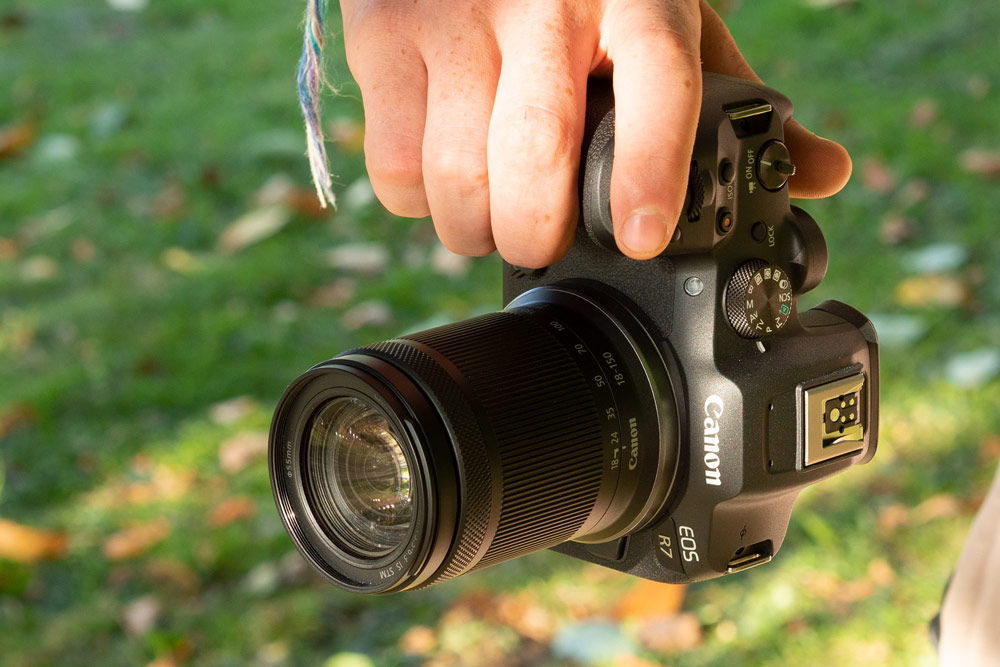
Amateur Photographer verdict
Better than any of Canon’s APS-C DSLRs or the EOS M system, the EOS R7 is a perfect starting point for photographers. Its only real weakness is the poor lens selection.- Impressive resolution for the price
- Weather sealing
- High-res LCD and EVF
- RF-S lenses still quite limited
- Beginners may prefer cheaper EOS R10
Specifications at a glance:
| Sensor | 32.5MP APS-C sensor |
| Lens mount | Canon RF lens mount |
| Autofocus | Intelligent subject detection and tracking |
| Continuous shooting | 30 fps |
| In-body Image stabilisation | 8 stops |
| Video | 4K60p |
The Canon EOS R7 was a long-expected addition to the flagship EOS R line-up, pairing the RF lens mount with an APS-C sensor. This is more sophisticated than its release partner, the EOS R10. With 32.5MP of resolution, it’s ambitious. On paper, it out-specs all of Canon’s APS-C DSLRs, as well as the entire EOS M mirrorless line, with up to 30fps continuous shooting, 5,915 AF points, and dual UHS-II SD card slots.
In our review, we were highly impressed with the EOS R7. Its extensive feature-set has been packed into a body that’s pleasingly light and handles well. The 2.36m-dot electronic viewfinder and a 3in, 1.62m-dot vari-angle touchscreen are both excellent, and the weather sealing is equivalent to the EOS 90D, which is highly welcome.
Canon RF-S lenses
Really, the only mark we had against the EOS R7 was the limited selection of native RF-S lenses – which should correct itself with time (there are now five dedicated RF-S lenses, up from three). It started with the RF-S 18-150mm F3.5-6.3 IS STM and RF-S 18-45mm F4.5-6.3 IS STM and was followed by the RF-S 55-210mm F5-7.1 IS STM. Full-frame RF lenses are fully compatible with the camera, but their size and price don’t balance well with it.
Canon’s entry-level stable for the EOS R system includes several models that sit beneath this one – the aforementioned EOS R10, EOS R50 and the ultra-cheap EOS R100. We reckon the EOS R7 holds the best value for beginners, but these others for less money are also worth considering.
Read our Canon EOS R7 review
Best for vlogging and beginners
Best for vlogging and mirrorless beginners: Fujifilm X-S20
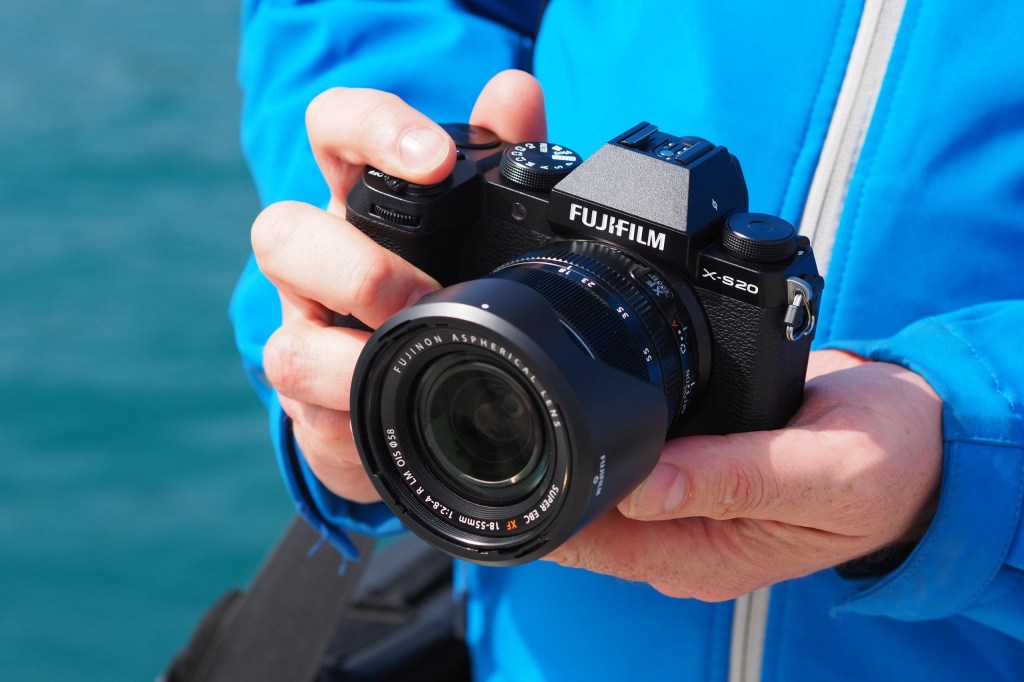
Amateur Photographer verdict
An easy to use and versatile mirrorless camera with an impressive set of video features and exceptional image quality, the X-S20 may be the ultimate all rounder.- Advanced AI subject-detection AF system
- Advanced video options (up to 6.2K)
- 3.5mm headphone and microphone sockets
- Excellent battery life
- Small electronic viewfinder
- Not weather sealed
Specifications at a glance:
| Sensor | 26.1MP |
| Lens mount | Fujifilm X-mount |
| Autofocus | AI-based autofocus |
| Continuous shooting | 30 fps |
| In-body Image stabilisation | 7 stops |
| Video | 6.2K 30p |
The Fujifilm X S-20 is an update to the company’s previous mini-DSLR styled camera, the Fujifilm X-S10. It is designed for ease of use, so is a great choice for those new to mirrorless technology. It is an impressive, feature-packed little camera with in-body image stabilisation and AI based subject-detection auto-focus that detects a wide variety of subjects; including animals, birds, automobiles, motorcycles and bikes, airplanes and trains. The popular film simulation modes found in other X-series cameras are available here too, now providing 19 different styles.
Video features have been significantly upgraded over its predecessor, now allowing up to 6.2K 30p recording and raw video output. Also, a new Video vlog mode has been added that’s designed to record yourself as well as giving quick on-screen access to product priority focus, as well as a background defocus mode, face/eye detection, self-timer, IS mode, and high-speed mode.
It delivers exceptional image quality from the 26.1MP X-Trans CMOS 4 sensor, the X-S20 builds on this success by providing a camera that is highly skilled for stills photography, as well as videography.
Read our Fujifilm X-S20 review
Best hybrid camera for beginners
Best beginners’ hybrid for content creators: Nikon Z50 II

Amateur Photographer verdict
Nikon’s first APS-C Z camera, and still the best option for beginner photographers (vloggers should look at the Z30). This portable shooter is ideal for travel.- Excellent RAW image quality
- Good for stills and video
- Fast, reliable autofocus
- Fully articulated LCD screen
- Few native DX-format lenses
- Single card slot
- No Af-area joystick
Specifications at a glance:
| Sensor | 20MP DX-format CMOS sensor |
| Lens mount | Nikon Z-mount |
| Autofocus | Subject detection and 3D tracking |
| Continuous shooting | 11fps |
| In-body Image stabilisation | No |
| Video | 4K 30p video; 4K 60p with 1.5x crop |
Nikon’s updated entry-level mirrorless model produces fine images and is a delight to use. The original Z50 was Nikon’s first shot at creating a DX-format mirrorless camera with an APS-C sensor and, just like its predecessor, the Z50II uses DX-format Z mount lenses. It can also be used with Nikon’s ever-growing range of full-frame Z mount optics and Nikon F-mount lenses can also be paired via the FTZ mount adapter.
The Z50II shares the same Expeed 7 processor as the firm’s high-end Z8 and Z9 models, so offers identical autofocus options like subject detection and 3D tracking, and we found that it handles fast moving subjects well.
The LCD screen can be fully tilted out to shoot from unconventional angles thanks to the fully articulated design.
This makes the Z50II ideal not just for stills but, for vlogging and shooting video too. It can record in 4K at 60 fps, albeit with a 1.5 crop, but if you are keen on using the full sensors width there is the 4K 30fps option too. It even supports Nikon’s 10-bit N-log output profile for colour grading.
The excellent electronic viewfinder is brightest in its class, making it easier to see what you are shooting even in really sunny conditions. There is a responsive touchscreen that enhances the shooting experience, and with 11fps continuous shooting and a speedy autofocus system, whether it’s used to capture stills or snippets of video, the Z50II produces great results.
The design is purposeful with a thoughtful control layout. Its excellent ergonomics and deep handgrip make for impressive handling, too – as we’d expect from Nikon. Overall, it’s a marvellous little APS-C format camera that offers great value for money, and you can’t fail to fall in love with it when using it. If you’re choosing within Nikon’s DX-format mirrorless system the Z50II is well worth a look.
The best mirrorless cameras for enthusiasts
This is where the fun begins. Here, we’ve compiled some of our favourite mirrorless cameras for enthusiasts, intermediate users; those with some experience and know-how. These cameras offer a level of depth and control exceeding that of most mirrorless models, without the huge price tags of the pro cameras (which follow). These cameras can be a great upgrade for anyone already invested in a particular system or brand, but some are good enough to tempt users to switch brands altogether.
Best overall for enthusiasts
Best all-rounder for enthusiasts: Nikon Z6 III
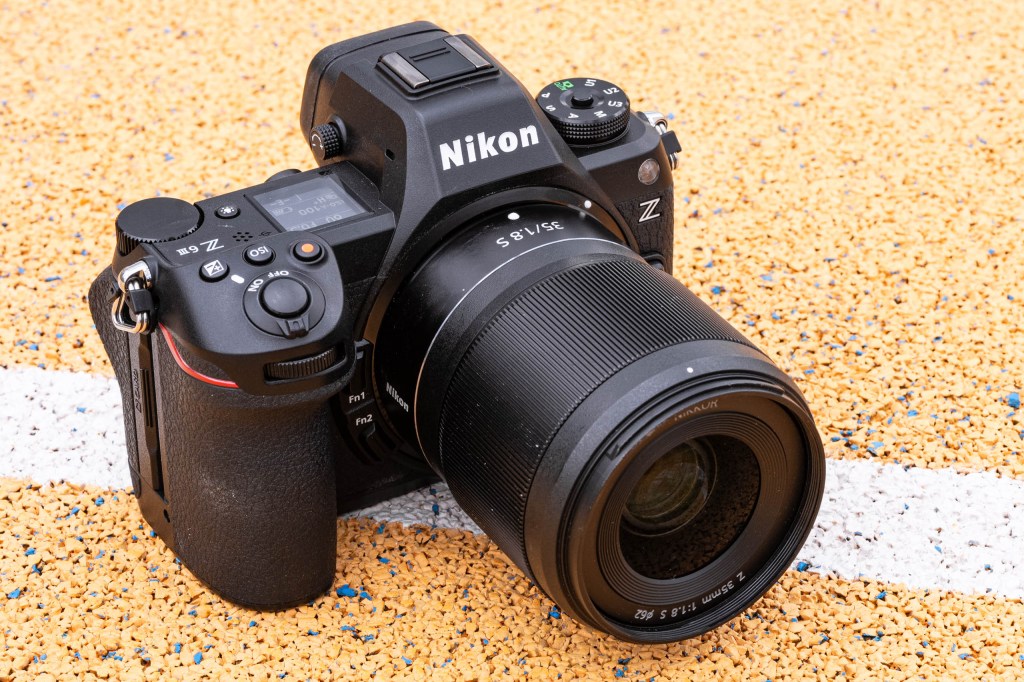
Amateur Photographer verdict
An utterly superb all-rounder, the Nikon Z6 III is the best mirrorless camera right now for serious enthusiasts and those looking to turn pro. It’s not cheap, but it’s a hell of machine.- Super-fast continuous shooting and autofocus
- Beautiful viewfinder and articulating screen
- Solid build with excellent control layout
- Price hike over Z6 II
- Image quality isn’t much improved from previous generation
Specifications at a glance:
| Sensor | 24.5 MP partially-stacked full-frame CMOS sensor |
| Lens mount | Nikon Z-mount |
| Autofocus | Subject detection and 3D tracking |
| Continuous shooting | 20fps |
| In-body Image stabilisation | 8 stops |
| Video | 6K 60p |
Rather than the resolution-focused Z7 cameras, the speedster Z8 or the top-end Z9, the Nikon Z6 cameras are designed as mid-range (well, upper mid-range) full-frame mirrorless cameras that do a bit of everything. The Nikon Z6 III is the latest in the line, and the first thing you’ll notice is the increase in price compared to the Z6 II. That’s asking a lot — does the camera justify it?
Upon completing our review, we said that it does. The Z6 III currently outclasses pretty much everything else at the level, and boasts the kind of features you’d normally have to spend a lot more to get. With a partially stacked sensor design greatly improving readout speeds, the Z6 III boasts autofocus speeds that far outstrip those of its predecessor, and are even nipping at the heels of the speedy Nikon Z8.
The best viewfinder ever?
In our review, our technical editor Andy Westlake afforded special mention to the Z6 III’s electronic viewfinder. Nikon’s mirrorless cameras have consistently sported excellent EVFs, but the specimen on the Z6 III really is something. It’s ultra-bright at 4000 nits, offers high resolution and covers the full DCI-P3 colour gamut. Combine this with a fully articulating screen and you have a camera that’s an utter pleasure to use, regardless of how you like to shoot.
In terms of raw image quality, the Z6 III isn’t much of an upgrade over the Z6 II. What makes it so special is everything else – all the improvements in it that make it such a special camera to use. With impressive capabilities and no significant weaknesses, it’s the camera that’ll tackle anything.
Read our Nikon Z6 III review.
Best analogue style
Best for those who like an analogue-style experience: Fujifilm X-T5
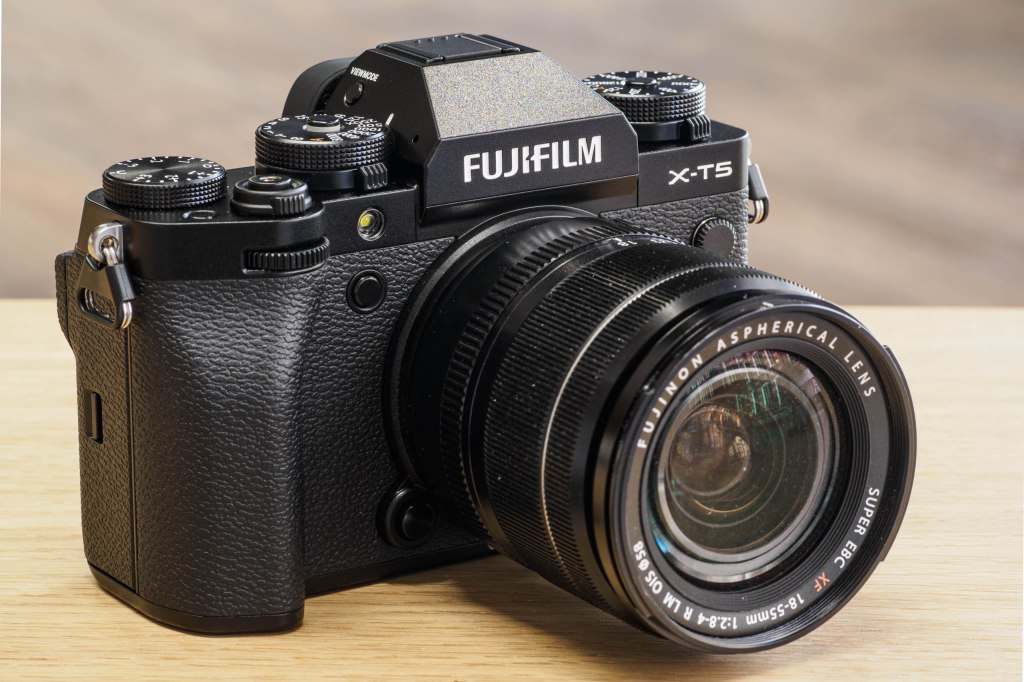
Amateur Photographer verdict
One of the most satisfying and enjoyable cameras to use, the X-T5 is a marvel for enthusiast photographers. Image quality and handling are just superb.- Brilliant images in JPEG and RAW
- Analogue-style handling
- Subject-detect autofocus
- 40MP may be overkill for some
- Limited full-res shot buffer
Specifications at a glance:
| Sensor | 40.2MP APS-C X-Trans CMOS 5 HR sensor |
| Lens mount | Fujifilm X lens mount |
| Autofocus | Subject detection autofocus |
| Continuous shooting | 15fps shooting (mechanical shutter); 20fps (electronic shutter, 1.3x 24MP crop) |
| In-body Image stabilisation | 7 stops |
| Video | 6.2K 30p / 4K 60p video |
With the X-T5, it felt like Fujifilm was returning to its roots after a succession of video-leaning hybrid cameras. Naturally, it came as a thrill to photographers when the firmly stills-oriented X-T5 made its debut in 2022; especially with the classic top-dial control system that has been wowing X-T enthusiasts since 2014. The real headline feature, though, was the sensor.
The X-T5 arrived with the same 40MP sensor as the Fujifilm X-H2, providing a serious resolution upgrade over the 26.1MP Fujifilm X-T4. Along with this, it gained sophisticated subject-detection autofocus, capable of picking out and locking onto specific subjects like humans, animals and vehicles.
A true enthusiast’s camera
Like many Fujifilm models, the X-T5 is just a downright enjoyable camera to use. Its 3-way tilting screen and high-quality viewfinder provide plenty of image composition options, and image quality is terrific both in raw and JPEG formats. Fuji’s excellent Film Simulation modes are all present and correct, allowing you to imbue images with the specific character of analogue stocks like Velvia and Astia. For producing great images straight out of camera – ready to share without much editing – no one does it better than Fujifilm.
More reasonably priced than either of the Fujifilm X-H2 cameras, the Fujifilm X-T5 is an exceptional enthusiast’s camera. It’s fully featured across the board, with fast burst rates, plenty of resolution and… well, we could go on. A resounding home run by Fujifilm.
Read our Fujifilm X-T5 review.
Best for wildlife and action
Best enthusiast mirrorless for wildlife and action: Panasonic Lumix G9 II

Amateur Photographer verdict
Reaffirming Panasonic’s commitment to Micro Four Thirds, this modern mirrorless marvel boasts phase-detection autofocus and state-of-the-art stabilisation.- Great design and control layout
- Fast autofocus and 75fps burst
- Extensive MFT lens range
- Lack of cooling fan limits recording times
- Full-frame Lumix S5 II isn’t much more expensive
Specifications at a glance:
| Sensor | 25.2MP Four Thirds sensor |
| Lens mount | Micro Four Thirds lens mount |
| Autofocus | Hybrid phase/contrast AF with 779 phase-detection points |
| Continuous shooting | Up to 75fps shooting (AFS + electronic shutter) |
| In-body Image stabilisation | 8 stops |
| Video | 5.7K 60p and 4K 120p video recording |
One of Panasonic’s newest releases, the Lumix G9 II came as welcome assurance that the manufacturer is still committed to the Micro Four Thirds format, even with the increased focus on its newer line of full-frame Lumix S cameras. Indeed, it appears that some developments made in the full-frame line are finding their way into the Lumix G series. The Lumix G9 II inherits significant DNA from the Lumix S5 II, which debuted at the start of 2023.
First, there’s the body design; the Lumix G9 II looks a lot more like the Lumix S5 II than it does the previous Lumix G9. There’s no cooling fan, and the smaller mount allows the design to squeeze in an extra function button, but otherwise this model handles much like its full-frame sibling. The placement of the 8-way AF joystick is well-chosen, making for intuitive operation. There’s a lovely big 3.68m-dot OLED viewfinder, and a 3in, 1.84-dot vari-angle touchscreen for additional options for composition.
Phase-detection autofocus
Probably the most significant addition to the Lumix G9 II is the phase hybrid autofocus. It is the first Panasonic-made Micro Four Thirds camera to have this, finally replacing the ageing, contrast-based Depth from Defocus system the firm had stuck by for years.
Boasting 779 phase-detect focus points that cover the entire frame, this system promises to be faster and more accurate. It also benefits from AI-powered subject-detection system that’s able to recognise and lock onto specific subjects like humans, animals and vehicles.
The Lumix G9 II is a tremendous boost for Micro Four Thirds as a system for serious enthusiasts, and a compelling alternative to cameras like the OM-System OM-1. It’s built for speed, with 8-stop stabilisation and burst mode that can reach speeds of 75fps.
Have a look at our list of 16 essential wildlife photography accessories
Read our full Panasonic Lumix G9 II review.
Best for travel and outdoors
Best enthusiast mirrorless for travel and outdoors: OM System OM-5

Amateur Photographer verdict
With IP53 weather-sealing, excellent stabilisation and an array of clever computational shooting modes, the OM-5 impesses as an all-rounder camera.- Class-leading weather sealing
- Huge array of lens options
- Images look great straight out of camera
- Stylish looks
- Relatively short battery life
- Buffer fills fast at 30fps
Specifications at a glance:
| Sensor | 20.4MP Four Thirds sensor |
| Lens mount | Micro Four Thirds lens mount |
| Autofocus | Face and eye detection, phase detection 121 AF points |
| Continuous shooting | 30fps shooting (10fps with C-AF) |
| In-body Image stabilisation | 7.5 stops |
| Video | 4K 30p video |
The second camera out of the gate in OM-System’s regeneration of the Olympus brand, the OM-System OM-5 can be seen as a replacement for the enthusiast-focused Olympus OM-D E-M5 Mark III, with a few replacements and updates that make it especially appealing as a travel camera.
For a start, it has the IP53 weather sealing that is fast becoming ubiquitous on all OM-System cameras and lenses. This is some of the most comprehensive weather sealing of any camera in this class, and allows you to take the OM-5 into basically any shooting situation with confidence.
Further to a full review, our editor Nigel Atherton conducted an OM-System OM-5 field test on an extended trip to Cape Town, South Africa to try it as a travel camera. With features like Starry Sky AF for night-time photography, as well as intuitive touchscreen AF-point selection and 10fps shooting with continuous autofocus, it proved adept in numerous situations. The only sticking point was the battery life – Nigel never quite hit the 300-shot stated limit in a day’s shooting, and felt compelled to carry a spare.
A real all-rounder
The selection of Micro Four Thirds lenses is one of the most expansive in the business, and will allow you to kit yourself out for any situation. With excellent stabilisation, beefed-up video features and superb JPEG output straight out of camera, the OM-System OM-5 is a camera for doing a bit of everything, and doing it well.
Read our full OM-System OM-5 review.
Best for filmmakers
Best enthusiast mirrorless for filmmakers: Panasonic Lumix GH7
Amateur Photographer verdict
A superb hybrid camera for both stills and video. With the same excellent handling and advanced video features as the GH6, it has significantly improved autofocus.- Vast range of video formats and high-end features
- Transformed autofocus thanks to phase detection and updated subject recognition
- Practically unlimited video recording times
- Superb in-body image stabilisation
- No automatic subject-type selection
- Lower dynamic range than larger-sensor cameras
- Slightly bulky body
Specifications at a glance:
| Sensor | 25.2MP Four Thirds sensor |
| Lens mount | Micro Four Thirds lens mount |
| Autofocus | Phase detection Af, subject detection modes |
| Continuous shooting | 75fps shooting (electronic shutter, fixed AF), 8fps (with C-AF) |
| In-body Image stabilisation | 7.5 stops |
| Video | 5.7K 60p video |
Rumours of the death of Micro Four Thirds proved greatly exaggerated when Panasonic dropped the rip-roaring update to the video-focused GH series with the Lumix GH6. With the GH7, the company has further built on the legacy of the GH4 to produce one of the best vlogging and filmmaking cameras you can buy.
The GH7 finally gains the update that users have been requesting for ages – phase detection autofocus. This has had a transformational effect on the firm’s other recent cameras, so its inclusion in the GH7 is genuinely exciting and should make it one of the best Panasonic cameras yet.
Read our Panasonic Lumix GH7 review
Best light setup for action
Best for action shooters who want a light setup: Fujifilm X-H2S
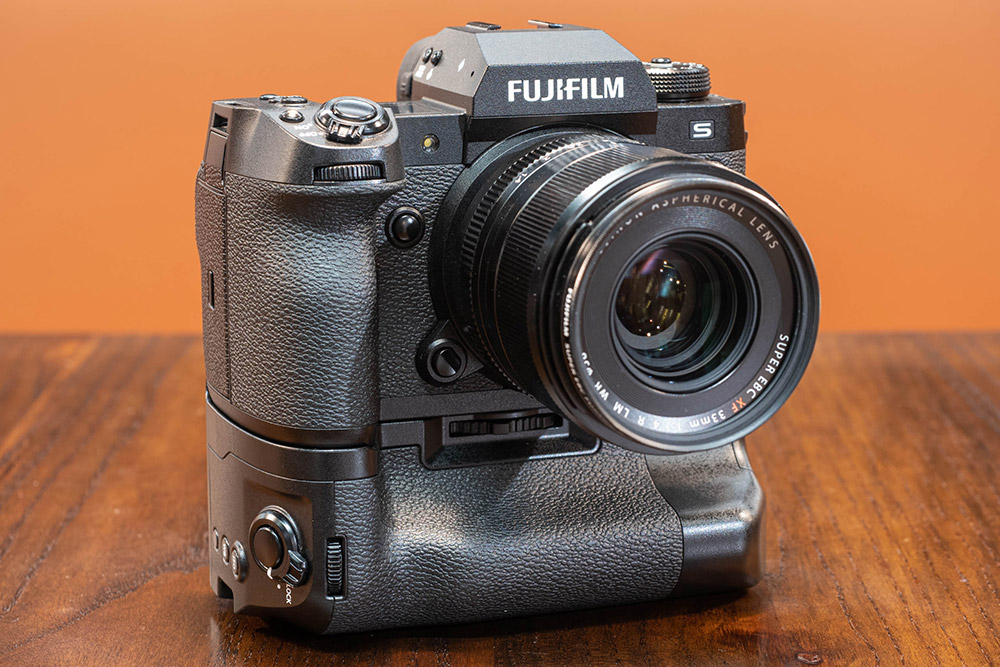
Amateur Photographer verdict
An incredible speedster, the Fujifilm X-H2S demonstrates that APS-C cameras can hustle with the big boys in the professional realm.- Impressive shooting speeds
- Lightweight but powerful
- AI-powered autofocus
- Intimidating price for APS-C
Specifications at a glance:
| Sensor | 26.2MP APS-C stacked BSI CMOS sensor |
| Lens mount | Fujifilm X lens mount |
| Autofocus | AI-subject detection |
| Continuous shooting | 40fps |
| In-body Image stabilisation | 7 stops |
| Video | 6K 30p |
The high-spec, high-performance Fujifilm X-H2S absolutely shows off what’s best about APS-C. It’s great for sports, great for wildlife and great for action, with a stacked 26.2MP X-Trans CMOS sensor that enables super-fast readout speeds. It’s an incredibly ambitious camera, capable of shooting at up to 40fps in full-resolution raw format, and boasting AI-powered subject-recognition autofocus.
As noted in our review, the Fujifilm X-H2S eclipses other APS-C models with its control layout. Immensely customisable, and robust-feeling in the hand, it’s streets ahead of APS-C contemporaries like the Sony A6000 series for handling. The move away from the dial-led controls of other Fujifilm cameras also makes it handle more like a professional model from Canon or Nikon. It really comes into its own when paired with a good telephoto lens like the XF 100-400mm f/4.5-5.6 – you get shooting speeds and real reach in an incredibly lightweight package.
Hefty price
The Fujifilm X-H2S is gunning all-around for a professional user, or at least a serious enthusiast, and this is reflected in the price: among the most expensive APS-C cameras ever released. The price is justified in that stacked sensors are just expensive to make – but how many people can afford it?
Read our Fujifilm X-H2S review
Best hybrid
Best for hybrid photo/video content creators: Sony A7 IV
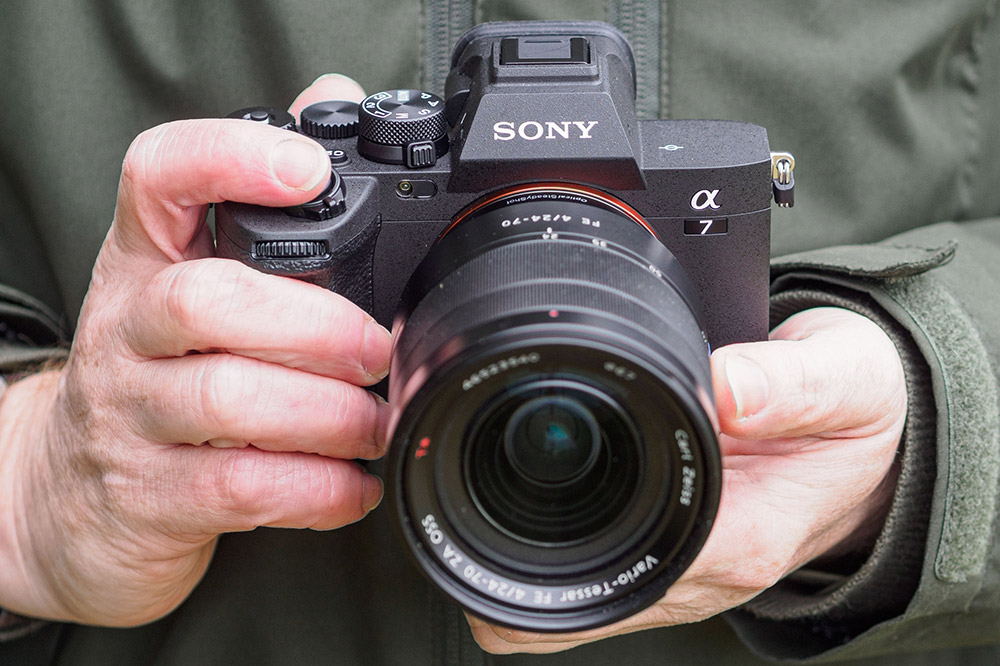
Amateur Photographer verdict
Excellent image quality and subject-detection autofocus make the A7 IV a force to be reckoned with in any department. The huge range of E-mount lenses is also a big plus.- Does everything well
- Good high-ISO performance
- Huge buffer depth
- Complicated autofocus system
- Menus hard to navigate
Specifications at a glance:
| Sensor | 33MP full-frame sensor |
| Lens mount | Sony FE lens mount |
| Autofocus | Subject recognition autofocus |
| Continuous shooting | 10fps |
| In-body Image stabilisation | 5.5 stops |
| Video | 4K 30p |
While many of Sony’s full-frame Alpha mirrorless cameras are specialists, the A7 models are good at some of everything. And the A7 IV is really, really good at it. Its 33MP sensor captures a generous level of detail; its 10fps burst-rate, while not class-leading, is more than enough for a lot of users. ISO performance is generally very good, with even images at 25,600 being usable with a bit of processing. Good work across the board.
There’s plenty more we could heap praise on here; it’s worth reading our full review for a detailed understanding of this camera, seeing how it comes together. That 10fps burst rate, for instance, is paired with a buffer depth that’s effectively unlimited if you’re using a memory card that’s fast enough to keep up.
Really, our only bugbear with the A7 IV is something that’s common to pretty much all Sony cameras – the convoluted, unintuitive menu systems that make it needlessly hard to navigate. It’s just something you’ll need to get used to.
Best for weddings and events
Best full-frame high-res for weddings and events: Nikon Z7 II

Amateur Photographer verdict
Producing high-resolution images, the Nikon Z7 II is great for those who want a premium shooting experience without paying Z9 money.- Dual card slots
- Well-designed body
- Excellent stabilisation
- Minor update from original Z7
- 4K 60p video is cropped
Specifications at a glance:
| Sensor | 45.7MP full-frame BSI CMOS sensor |
| Lens mount | Nikon Z lens mount |
| Autofocus | 493 phase detection points, selectable AF detection modes |
| Continuous shooting | 10fps shooting (Single AF) |
| In-body Image stabilisation | 5 stops |
| Video | 4K 60p |
The Nikon Z7 II improves on the original Nikon Z7 in subtle but significant ways, making an already very good camera, even better. The camera features improved continuous shooting, dual card slots, and face/eye/animal detection AF.
There’s a 45.7MP full-frame sensor that provides stunning image quality, backed up by 5-axis in-body image stabilisation and fast, accurate autofocus. The viewfinder is superb, and F-mount SLR lenses can be used via the FTZ adapter. The high-resolution sensor and fast autofocus will be appealing to wedding photographers or anyone that craves speed paired with a serious amount of detail. It’s also useful for cropping if you want to shoot from a distance, too.
A sheer delight to use
You get up to 10fps shooting which, while not superb for action, isn’t too bad if it’s not something you shoot relatively often. But if you’re frequently shooting action, the Z6 II and certainly the Z9 cameras are probably better choices within Nikon’s mirrorless range. It can also shoot 4K video, albeit with a crop.
The Z7 II feels fantastic in the hand and is a delight to use. Then there’s its fabulous image quality, which is remarkably impressive and offers magnificent latitude when processing Raw files. This is a fantastic all-rounder, which works well for professionals and dedicated enthusiasts who perhaps don’t have the need or the budget for a Z9.
Best Canon all-rounder
Best Canon all-rounder for enthusiasts: Canon EOS R6 Mark II

Amateur Photographer verdict
Canon’s best all-rounder got even better with the release of the Mark II version. A camera that produces terrific images in just about any situation, it’s a winner for enthusiasts.- Excellent design and handling
- Fast shooting and focusing speeds
- Consistently impressive image quality
- RF mount lacks third-party AF lenses
- Some shutter distortion with electronic shutter
Specifications at a glance:
| Sensor | 24.2MP full-frame sensor |
| Lens mount | Canon RF lens mount |
| Autofocus | AI subject detection autofocus |
| Continuous shooting | 40fps |
| In-body Image stabilisation | 8 stops |
| Video | 4K 60p |
The original Canon EOS R6 was already a superb full-frame all-rounder, and scooped our Product of the Year award back in 2021. This version has relatively few changes to what was already a superb camera, and understandably so. Those that Canon did make are well-chosen, making it one of the best all-around cameras for enthusiasts and professionals.
For a start, while the previous model had a 20MP sensor, this one ups it to a 24.2MP full-frame chip. That may not sound like much, but it makes a real difference when it comes to cropping and printing, and should satisfy the stills shooters who felt that 20MP was perhaps a little on the stingy side.
Subject-detection autofocus
Elsewhere, the EOS R6 II gets what was the feature of the year in 2022: subject-detection autofocus, powered by AI to lock onto specific subjects with unerring accuracy. This combines beautifully with the increased burst rates – the EOS R6 Mark II can rack up to 40fps with its electronic shutter, or a still-respectable 12fps full-resolution raw with the mechanical shutter if you don’t want to run the risk of rolling shutter distortion (which can happen).
DSLR holdouts could find themselves mightily tempted by the EOS R6 Mark II. Its handling is excellent, with a large, deep handgrip and loads of external physical controls. The viewfinder is lively and responsive with a 120fps refresh rate, while the LCD screen can be set to face almost any angle.
Its ability to shoot, well, anything, means the EOS R6 Mark II won’t disappoint. It’s on the expensive side for an enthusiast’s camera, but at the same time, it’s difficult to think of another at this price point that’s this good at everything. Build up a solid set of RF lenses and you’ve get a setup for every situation.
Read our Canon EOS R6 Mark II review
Best mirrorless cameras for professionals
And at last, here are the best of the best. This section contains mirrorless cameras that command serious prices – as befit the professional photographers and videographers for whom they are made. Here you’ll find dazzlingly high megapixel counts, full-frame sensors (and larger), super-fast burst rate and AI-powered autofocus systems intelligent enough to recognise specific subjects.
Best pro mirrorless overall
Best pro mirrorless overall: Canon EOS R5 II
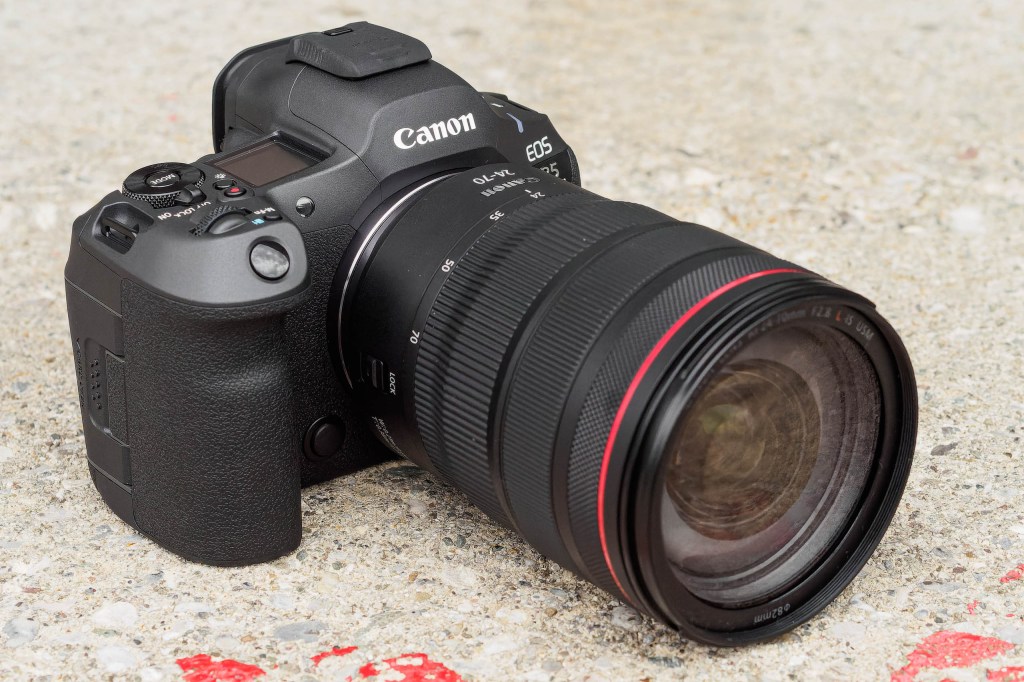
Amateur Photographer verdict
The Canon EOS R5 Mark II stakes a strong claim to be the best professional high-resolution, high-speed all-rounder on the market. The addition of eye control focus elevates it from its rivals, too.- Excellent handling
- Incredible subject detection AF
- Eye Control Focus
- Great image stabilization
- Not compatible with some third-party LP-E6 batteries
- Eye control may not work well for everyone
Specifications at a glance:
| Sensor | 45MP stacked CMOS sensor |
| Lens mount | Canon RF |
| Autofocus | Eye Control Focus |
| Continuous shooting | 30 fps |
| In-body Image stabilisation | 8.5 stops |
| Video | 8K 60p |
The R5 has been one of Canon’s best high-resolution full-frame mirrorless cameras. It boasted impressive specs but had some issues with overheating during high-res video recording. The EOS R5 II addressed this problem and further improved this otherwise stellar full-frame powerhouse’s video specs and overall performance.
The R5 II has the same megapixel count as its predecessor, but now it’s equipped with a new back-illuminated stacked-CMOS sensor that reduces rolling shutter by 60 %. It also received a new DIGIC X processor, enabling new autofocus features, faster video shooting, and more responsive operation.
The impressive Eye Control Focus technology, previously seen in the EOS R3 detects where you are looking in the viewfinder and then automatically focuses on that subject. Another new autofocus feature the ‘Action Priority’ autofocus has ball tracking and recognises ‘action poses’ in football, basketball, and volleyball. It also registers up to ten faces that it will prioritise focusing on, and even lets you arrange them in order of priority.
Now, for the video specs, Canon made sure to bulk up in this area, fixing the overheating issue by adding an internal heat dissipation channel. For those who plan to put it through even more demanding use there is an additional cooling fan grip. The R5 II records internally in 8K 60fps using Canon’s proprietary SRAW format. Another new feature is proxy recording where a low-resolution file can be simultaneously recorded to the second memory card for easier editing. There’s also a new dual still/video shooting function, in which it’s possible to record Full HD video to one memory card and still images to the other at the same time.
In our full review we’ve found that “for any photographers still using 5D-series DSLRs, the EOS R5 Mark II is a massive step forward. Even for existing EOS R5 users, there’s plenty here to make it worth considering upgrading.”
Read our full review of the Canon EOS R5 II.
Best for landscape
Best pro mirrorless for landscape shooters and print makers: Sony A7R V
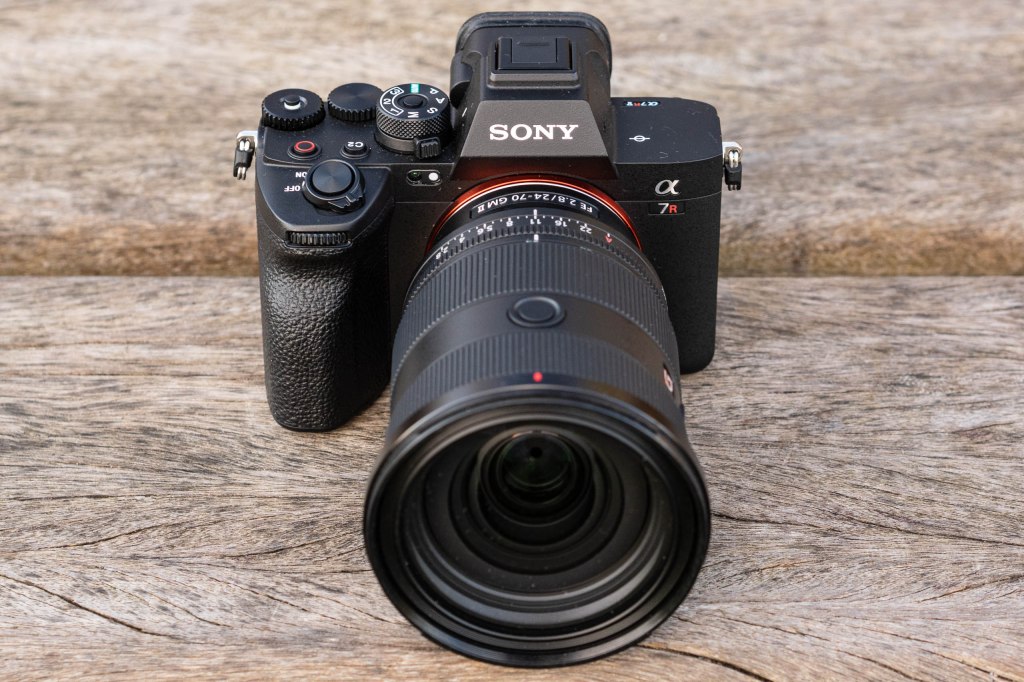
Amateur Photographer verdict
It’s a pricey proposition, but the proven quality of Sony’s 61MP full-frame sensor simply blows the competition away. For landscapes, this is a top performer.- Highest-resolution full-frame camera
- Subject-detection autofocus
- Variable-resolution Raw recording
- Sony menus still (still!) a mess
- No in-camera Raw conversion
Specifications at a glance:
| Sensor | 61MP full-frame CMOS sensor |
| Lens mount | Sony FE-mount |
| Autofocus | Subject detection |
| Continuous shooting | 10fps |
| In-body Image stabilisation | 8 stops |
| Video | 8K 24p |
Sony’s A7R cameras have long led the way in resolution for full-frame mirrorless, and right now if you want megapixels, the A7R V is your port of call. It sports a full-frame chip with 61MP of resolution to play with – currently only the Sigma fp L matches it, and nobody in the world of full-frame beats it.
Of course, this was also true of the previous A7R IV / A7R IVA – the Mark V version uses the same sensor as its predecessor. So, as someone wincing at its price tag might reasonably ask, what exactly is new?
The short answer is everything else. Sony sensibly decided that 61 megapixels suffice for most people (for now, at least), and instead set about upgrading all other aspects of the camera. As such, the A7R V benefits from up-to-the-minute features as subject-detect autofocus (as already encountered in this guide). The A7R V isn’t exactly a speedster, but with this system and 10fps burst shooting, it does reasonably well with fast subjects.
What else is new?
There are external improvements too. The A7R V gets a nice big viewfinder with buckets of resolution, as well as a redesigned screen that combines an up/down tilting mechanism with a fully articulating side hinge. More? Sony also beefed up the in-body stabilisation, which is now rated up to eight effective stops, and can be used in a multi-shot composite mode to produce images up to 240MP in resolution.
The catch is, of course, the price. Sony’s line used to be made up of quite specialised models with different functions, but these days all its cameras seem to be good at everything – and come with a price tag that reflects that. Only time will tell whether this is a savvy strategy on Sony’s part – and only you can tell whether all the features of the A7R V are worth its intimidating price tag.
Read our Sony Alpha A7R V full review
Best Nikon for sports
Best pro Nikon mirrorless for sports professionals: Nikon Z9

Amateur Photographer verdict
An outstanding achievement in professional mirrorless design, the Nikon Z9 is a true next-generation camera.- Integrated vertical grip
- Up to 120fps at 11MP
- And 20fps full-res RAW
- Overkill for most people
- More expensive than Z8
Specifications at a glance:
| Sensor | 45.7MP full-frame stacked CMOS sensor |
| Lens mount | Sony FE-mount |
| Autofocus | Subject detection |
| Continuous shooting | 10fps |
| In-body Image stabilisation | 8 stops |
| Video | 8K 24p |
The Z9 is Nikon’s new flagship professional full-frame mirrorless camera. It’s capable of shooting 45.7MP images at 20 frames per second in raw (for more than 1,000 frames in a row), or 30fps in JPEG, with continuous autofocus tracking. A new AI subject detection AF system is capable of recognising multiple kinds of subjects, and the camera can also record 8K video for several hours without overheating.
In fact, the Nikon Z9 offers a combination of high-end specifications and professional-level build that simply hasn’t been seen before. Drop the resolution to 11MP, and the Z9 will run at an astonishing 120fps. Crucially, it promises the pro-level control setup and extreme durability that’s essential for photographers who make a living from their cameras.
Low-distortion electronic shutter
Technically, the Z9 breaks new ground in being the first camera of its type to eliminate the mechanical shutter completely. Instead, it relies entirely on a high-speed, low-distortion electronic shutter that’s enabled by its use of a stacked CMOS sensor. Both the Sony Alpha 1 and Canon EOS R3 employ similar technology, but only Nikon has been brave enough to take it to its logical conclusion.
Previously, Nikon split its pro DSLR lines between high-speed sports and action models and high-resolution cameras for wedding, portrait and studio work. But with the Z9, Nikon has aimed to produce a single camera that can do anything a professional photographer might need. It is, arguably, the first mirrorless model to put itself forward as a complete replacement for any professional full-frame DSLR.
You could argue that the Z9 doesn’t actually do very much that the Sony Alpha 1 doesn’t already offer, but the big difference is its chunky, robust build, integrated vertical grip for shooting with large lenses, and the familiar design and handling for long-term Nikon users. It’ll also work with their F-mount DSLR lenses via the FTZ2 adapter. If its price forbids, consider the Nikon Z8, which offers a slightly compromised experience at a (slightly) more palatable price.
Best Canon for sports
Best pro Canon for fast-paced sports: Canon EOS R3

Amateur Photographer verdict
Canon’s latest go at an action-oriented pro shooter, the EOS R3 is highly capable and smartly designed. The autofocus is one of the best systems ever designed.- Versatile in all situations
- Eye-control focus
- Superb stabilisation
- May not be enough pixels for some
Specifications at a glance:
| Sensor | 24.1MP full-frame stacked CMOS sensor |
| Lens mount | Canon RF lens mount |
| Autofocus | Eye control autofocus |
| Continuous shooting | 30fps (electronic shutter) |
| In-body Image stabilisation | 8 stops |
| Video | 6K 60p |
The EOS R3 is Canon’s new super-fast, action-focused, professional full-frame mirrorless camera. Indeed, the firm says this is the fastest and most capable camera it has ever made, being capable of shooting at 30 frames per second in full resolution 24MP raw. It can also record 6K raw video at 60 frames per second.
The EOS R3 is built around an all-new 24.1MP full-frame stacked CMOS sensor, which offers a standard sensitivity range of ISO 100-102,400 (expandable to ISO 50-204,800). The stacked architecture brings remarkable speed, including a world-record top shutter speed of 1/64,000sec, and the ability to combine flash with the silent electronic shutter at a sync speed of 1/180sec. The shutter lag is just 20ms, which is so short that Canon offers a menu option to lengthen it to match its DSLRs.
But arguably its most exciting feature is a new twist on an old Canon technology, eye-control focus. This means the camera can detect what the user is looking at in the viewfinder, and then autofocus on it. This futuristic-sounding feature was found on several of Canon’s 35mm film SLRs in the 1990s, but the big difference lies in the way it now works in concert with subject recognition technology.
Eye control AF
Eye Control AF employs an array of infrared LEDs to determine where you’re looking in the viewfinder, which is indicated by a circular blue cursor. The camera then uses this information to select a subject for tracking when the shutter button is held half-pressed. The system must be calibrated to each photographer’s eye, but this is straightforward.
As is becoming increasingly standard, 5-axis in-body image stabilisation (IBIS) is built in. This works together with optically stabilised lenses to provide up to 8 stops of stabilisation (according to CIPA standard ratings). There’s no IBIS-based high-resolution multi-shot mode, but given the camera’s target audience, that’s no great surprise (or loss).
The Canon EOS R3 is an intoxicatingly brilliant camera to shoot with. It boasts one of the most sophisticated autofocus systems around, but makes it remarkably easy to use, allowing you to change settings quickly to suit the situation. You can buy the brilliant EOS R6 II for less than half the price, and spend the money saved on some very nice lenses. But for Canon users who demand the ultimate speed and autofocus performance, the EOS R3 is the camera to get.
Best for high-end users
Best pro mirrorless for high-end professional users: Sony Alpha 1 II
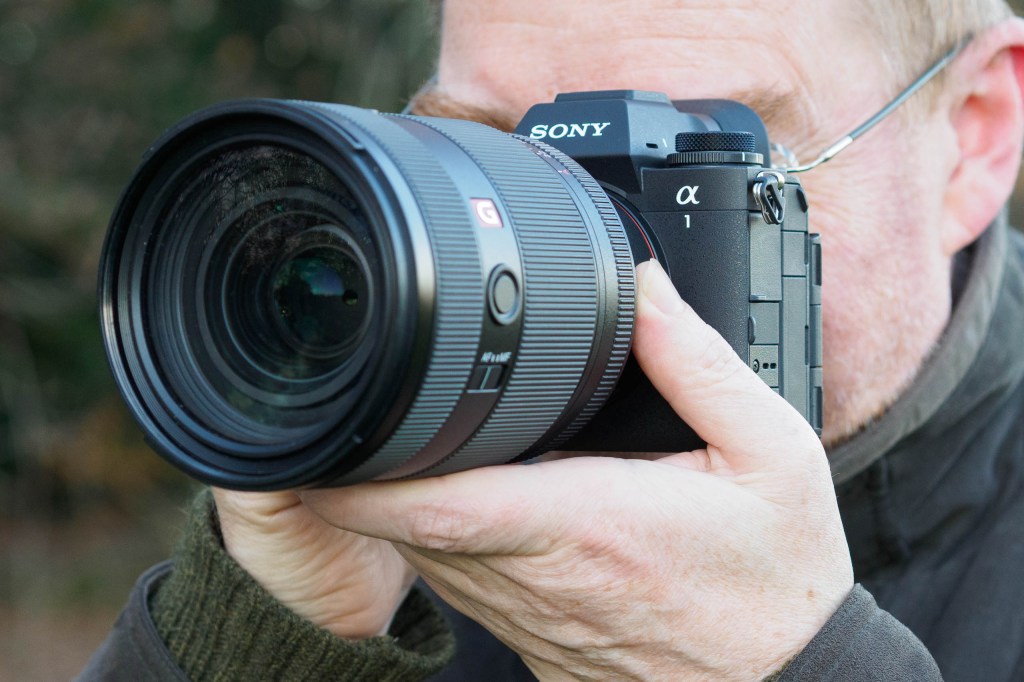
Amateur Photographer verdict
There’s no doubt the Sony Alpha A1 II is one of the most capable cameras we’ve yet seen, with its high resolution, rapid shooting, and superb autofocus. It’s expensive, but can handle almost any task.- Next-generation autofocus
- Amazing dynamic range
- Superb shooting speeds
- Auto subject detection
- Price, obviously
Specifications at a glance:
| Sensor | 50.1MP full-frame stacked-CMOS sensor |
| Lens mount | Sony FE lens mount |
| Autofocus | Auto subject detection |
| Continuous shooting | 30fps |
| In-body Image stabilisation | 8.5 stops |
| Video | 8K 30p / 4K 120p |
Sony’s latest flagship model, the Alpha 1 II updates the original, ground-breaking A1, and delivers the same high-speed shooting and video performance, however, it’s now updated with an impressive focus system as well as pre-capture. In terms of pixel count, its 50.1MP full-frame sensor is surpassed in a similar price bracket only by the firm’s own 61MP Alpha 7R IV and Fujifilm’s 102MP medium-format GFX100S…
However, this is combined with the ability to shoot at a startling 30 frames per second, which can be matched by very few other cameras, and all at lower resolutions. The fact that the Alpha 1 can shoot at 50MP and 30fps while adjusting focus and exposure between frames is impressive. It records 8K video at 30fps and 4K video recording at 120fps as well.
Improvements made
The A1 II has Sony’s best ever in-body image stabilisation (IBIS), it’s rated for 8.5 stops of shake reduction in the centre of the image, (7.0 at the edge) compared to 5 stops for the original A1. The Sony Alpha A1 II is the best Sony camera ever made, the only issue being the high-price compared to Nikon and Canon rivals, which offer very similar speeds. The A1 II really can do pretty much anything – if you don’t get the shot, there’s no blaming the camera any more. For professional Sony shooters, it’s the obvious choice.
Read our Sony Alpha 1 II review
Frequently asked questions (FAQ)
How to choose the best mirrorless cameras
When looking at mirrorless cameras, you want to weigh up their various specs with your shooting priorities. Having more resolution makes sense if you want to make high-quality prints of your images, but if you’re only going to be sharing images online, all those pixels will just slow down your process.
If you want to capture fast action, then a fast burst rate is a must. For low light work, a broad ISO range will help, and you may also want to consider a camera with in-body image stabilisation (IBIS) as this allows for the use of slower shutter speeds (thus gaining more light) without blurring the image. Many camera systems offer lens-based optical image stabilisation (OIS) and the two, OIS and IBIS, can work collaboratively for even greater benefit.
Also, different mirrorless cameras will use a different lens mount, so you will want to look at what lenses are available for a camera before committing, particularly as many full-frame lenses cost a lot of money.
What is the best sensor size for a mirrorless camera?
There are a range of different sensor sizes available for mirrorless cameras – the ones we’ll be dealing with are (from smallest to largest): Four Thirds / Micro Four Thirds, APS-C, full-frame and medium format. Larger sensors provide better image quality, but cost more, and require bigger cameras. If full-frame is the size you want, then look at our guide to the best full-frame mirrorless cameras.

On that subject, mirrorless cameras come in a wide range of different sizes and weights, so have a think about how much weight you’re comfortable lugging around. If you need to get your head around sensor sizes, see our guide to APS-C vs full-frame.
Finally, there’s video, which is fast becoming the driving force behind new camera development. 4K video capture has become a basic expectation, but some cameras can shoot 6K, even 8K video. Faster frame rates can offer powerful slow-motion effects, and the best cameras can achieve this even at 4K resolution.
What is the difference between a mirrorless camera and a DSLR?
If you’re not sure whether you should buy a DSLR or a mirrorless camera, then have a look at our complete guide to DSLR vs Mirrorless cameras.
It’s worth giving an honourable mention to some cheaper models that are too basic to make our list, but are viable options if money is tight. These include the vlogging focused Nikon Z30 and retro-styled Nikon Zfc, together with the new Canon EOS R100 and EOS R50 models. And if you’re keen to get started in content creation with a camera that has a solid lens line-up behind it, it’s hard to do better than the Sony ZV-E10 or the Panasonic Lumix G100.
Are mirrorless cameras replacing DSLRs?
In a nutshell, the future of photography is mirrorless cameras, with all major brands, including Canon, Nikon, Sony, Panasonic, Fujifilm, and Olympus/OM System committing themselves to mirrorless cameras. The only brand still making new DSLRs is Pentax.
Mirrorless cameras offer the latest tech, the newest sensors, and the fastest performance, as well as completely new lenses designed specifically for mirrorless cameras, and that gives them a range of benefits over older, slower DSLRs. DSLR and Mirrorless cameras are just two of the different types of cameras available.
How we test mirrorless cameras
Testing mirrorless cameras isn’t just about lab charts and specs — it’s about seeing how they perform in the real world. Each model is put through its paces with hundreds of photos and video clips shot in a wide variety of conditions. We examine their control layout and handling as well as screen size and brightness also response time in case of touchscreens and the practicality of any articulating design. We test the electronic viewfinder with particular attention to brightness, colour accuracy and real-time exposure preview.
Autofocus performance is one of the key areas of testing. Continuous subject tracking, or special features like the Eye Control on the Canon EOS R5 Mark II or other advanced Subject Detection modes are all evaluated, whether capturing fast-moving action or more composed scenes.
Many models boast high fps continuous shooting capabilities and features like AI-assisted focus tracking, to test these features we use fast-moving subjects to reveal how well the system holds focus and how many frames truly hit the mark. We also assess their image stabilisation system and test how well they counter rolling shutter effects. Blackout-free shooting, buffer depth, and overall responsiveness at high speeds are also measured to see how each camera handles high burst rates.
Last but by no means least, we critically evaluate image quality, in both JPEG and raw, including resolution, high-ISO noise, and dynamic range – as well as video capabilities.
We then take all these factors into account, along with such things as portability and lens systems, when giving our final conclusion and score. You’ll find the full breakdown of how each mirrorless camera has performed in our full reviews.
Recent updates
- October 2025: Links to deals for the OM System OM-5 and Sony Alpha 1 II updated. Category headings clarified. Number of RF-S Canon lenses updated, link to Canon’s page listing all RF and RF-S lenses added. Descriptions of camera performance simplified throughout.
Text by Geoff Harris, with contributions from Joshua Waller, Jon Stapley & Michael Topham.
Further reading:
- Best lenses for mirrorless camera systems
- Best Nikon mirrorless cameras
- Best Canon mirrorless cameras
- Best second-hand full-frame mirrorless cameras

